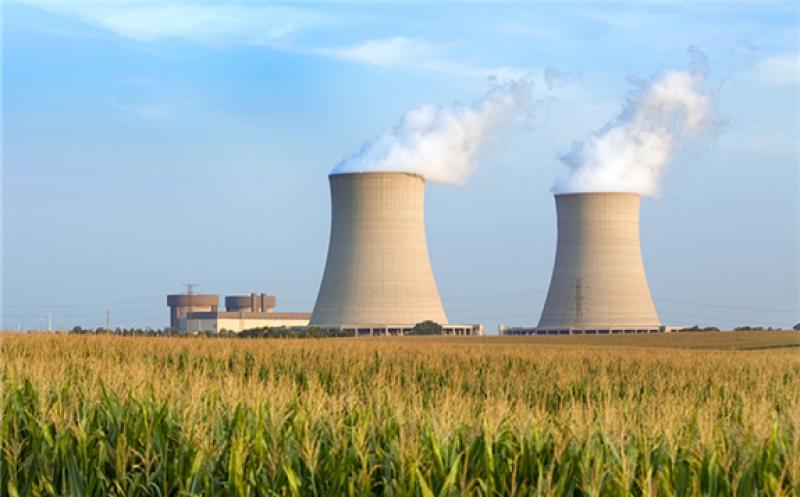Nuclear power is likely to be key to the clean energy transition, but the problem of what to do with nuclear waste represents a major hurdle to new nuclear energy projects in the United States. In order to meet its ambitious climate goals, the Biden administration will need to solve this thorny issue, according to several Stanford University experts.

When Biden took office, he inherited some 83,000 metric tons and counting of highly radioactive spent nuclear fuel scattered at above-ground sites around the country – more than three times the weight of the Statue of Liberty including its concrete foundation. Biden also inherited a stalemate on U.S. nuclear waste strategy. After more than four decades and $13 billion, there is still no widely accepted strategy for dealing with nuclear waste and no active plan for its long-term storage.
“Nuclear power might not be needed everywhere, but in some parts of the country it might be the best and maybe even only reliable low-carbon option,” said Sally Benson, the Precourt Family Professor and a professor of energy resources engineering. “But it’s hard to make the case that we should move ahead with nuclear power until we have a solution on nuclear waste.”
Even if nuclear power may not be the answer in the long run, it’s too early to take it off the table, said retired Adm. James Ellis, the Annenberg Distinguished Visiting Fellow at the Hoover Institution and former Navy commander. He sees nuclear energy as an important source of clean, reliable power, especially until we address grid-scale storage and reliability issues with renewables.
“There’s an old saying in the Navy that you never let go of one rope until you get a firm grip on the other,” he said.
Breaking the stalemate
The United States is advanced in terms of nuclear knowledge and technology, but our nuclear waste program is plagued by a complex web of factors, according to Rodney Ewing, the Frank Stanton Professor in Nuclear Security and foremost nuclear waste expert at Stanford.
“We’ve spent more money than anyone else on this subject. We have more reactors than any other country in the world. And yet our nuclear waste strategy is at a standstill while other countries are making greater progress,” he said.
What can the Biden administration do to move the United States past its nuclear impasse?
Over the last decade, several studies have taken a comprehensive look at the nuclear waste issue. One of these was the Obama administration’s Blue Ribbon Commission on America’s Nuclear Future, which produced a report in 2012. Similarly, Ewing led a three-year effort to better understand why the U.S. nuclear waste program is not successful and to recommend a way forward. This effort culminated in the 2018 Reset of America’s Nuclear Waste Management Strategy and Policy report.
The two reports share some significant recommendations, including a consent-based repository selection process and the creation of a new organization to oversee nuclear waste disposal.
Benson says it’s time for a new site-selection process for a geologic repository in the United States. Over the last few decades, much of U.S. nuclear waste strategy has focused on the proposed Yucca Mountain Nuclear Waste repository in Nevada, the development of which was halted by the Obama administration in 2011 in the face of local and state opposition after $12 billion in costs. This time, the process should be voluntary, Benson said, giving communities more say in whether to build a repository nearby.
This kind of consent-based approach has worked in other countries, according to Ewing. For example, in Sweden, communities can essentially veto a nuclear waste project. This dynamic increases the level and sincerity of public engagement, Ewing said, and can lead to a more successful outcome.
Ewing and Ellis would also like to see the creation of a new organization with sole responsibility for nuclear waste management that would implement and coordinate nuclear waste strategy.
“When we look around the world at successful nuclear waste programs, this is what works,” Ewing said.
Currently, no one group, institution or governmental organization has ultimate ownership of the waste issue, meaning there is little incentive to find a solution.
Recognizing that the creation of a new organization is a heavy lift, Ewing also recommends that the United States undertake a comprehensive analysis of the risks and costs associated with keeping nuclear waste in above-ground sites for 200 years.
“At this stage I couldn’t tell you whether nuclear waste disposal is a pressing issue or something that can wait,” he said. “If there is no harm to doing nothing for 200 years, then that’s very valuable information. If there is harm, then that could become the motivating force that’s absent today.”
A matter of trust
Whatever actions the Biden administration decides to take on nuclear waste, trust and credibility need to be at their center, the Stanford scholars say.
“You can’t use force. That has been tried and it has failed,” said Ewing. “Unless we mobilize people in a constructive way that really gives voice to everyone’s concerns, I think we will continue to fail.”
Whether it’s a new nuclear waste organization, a new consent-based siting process, a comprehensive analysis of the status quo or some other approach, U.S. nuclear waste strategy should be a collective effort that brings together communities, tribes and states, according to Ewing.
“My greatest concern is that in 30 years we will be in the exact same position as we are now. The only difference would be that instead of having 80,000 metric tons of spent fuel scattered around the country, we would probably have 140,000 metric tons,” Ewing said. “That’s unconscionable.”